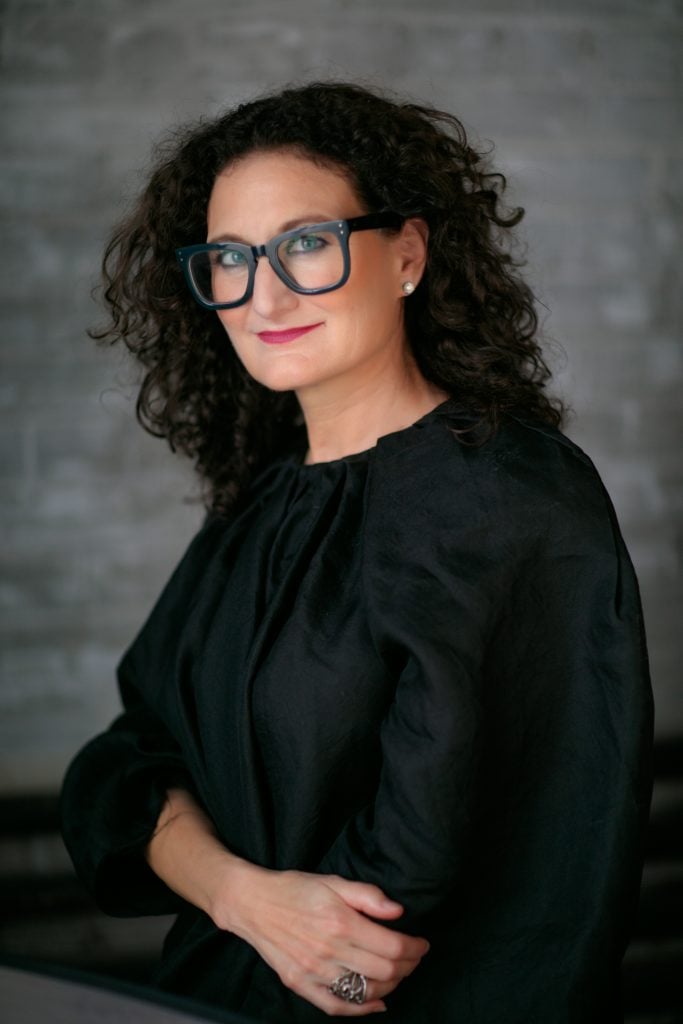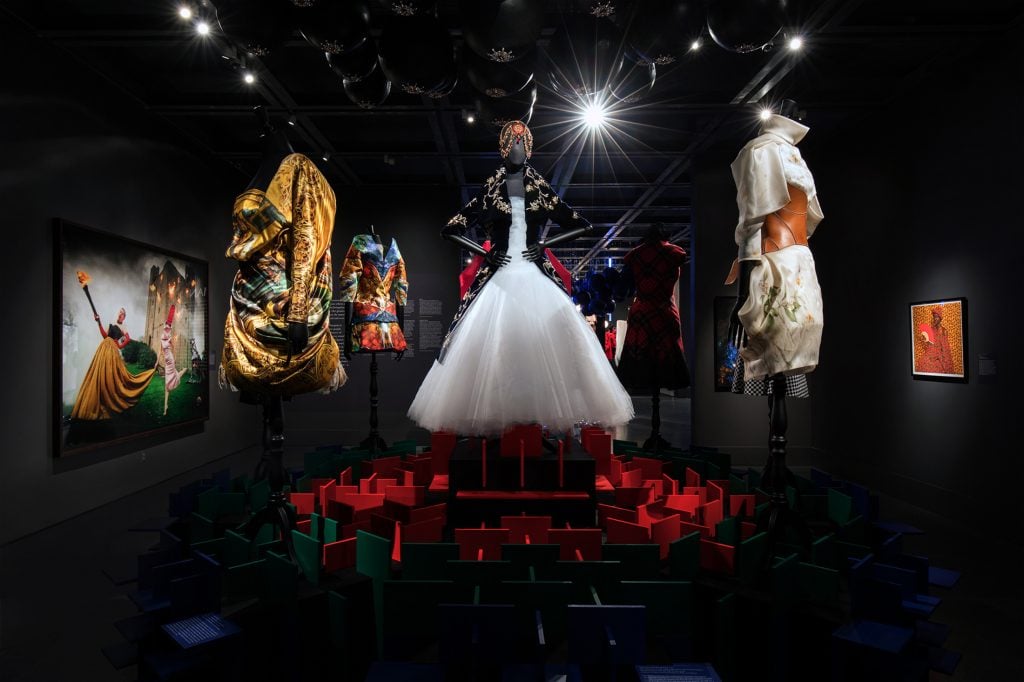People
What I Buy & Why: St. Louis Collector Susan Barrett on Her Most Gratifying Purchase and Why Amy Sherald Is ‘the Holy Grail’
The president of the art consultancy Barrett Barrera Projects opens up on her collecting habits.

The president of the art consultancy Barrett Barrera Projects opens up on her collecting habits.

Naomi Rea

Like many of us, collector Susan Barrett has had a lot of time on her hands this past year.
Deprived of the usual circuit of art fairs and exhibitions, Barrett has been busying herself discovering art online, on Instagram, and delving into the world of live-streamed auctions.
As president of Barrett Barrera Projects, an art consultancy that produces, represents and manages collections, her personal and professional lives intertwine. The company has three exhibition spaces in St. Louis, Missouri, and tours exhibitions around the world, most recently one of the world’s largest collections of fashion designer Alexander McQueen’s work.
We caught up with Barrett to talk about what’s in her personal collection, which artists are on her radar, and why looking at a Frida Kahlo work feels like going home.
Lynette Yiadom-Boakye, Diplomacy III (2009). Courtesy of Susan Barrett and Faye Fleming & Partner, Geneva.
What was your first purchase (and how much did you pay for it)?
My first major purchase was a Lynette Yiadom-Boakye painting. I bought three of them, two small and one large, when the Swiss gallerist Laura Gowan was representing her. Gowan had a little booth at the Armory Show, and there were three major paintings on the wall, and on the floor there were dozens of little portraits, all stacked. People were buying them like crazy! I bought two of them immediately for $1,200 each.
While I was in the cab leaving the fair, I suddenly thought of one of the large paintings again. I called Laura Gowan and asked if that one was still for sale. The price of the larger work was such a stretch for me, but she was kind enough to work out a deal. After that, she told me that the Wall Street Journal was going to feature that piece to illustrate their coverage of the best of the fair.
A few months later, the Studio Museum in Harlem called to ask if they could borrow the painting for a retrospective of Yiadom-Boakye’s work. It was amazing to have such an immediately gratifying experience, which most collectors don’t get for a very long time, if ever.
What was your most recent purchase?
I recently purchased a Genieve Figgis painting, whose work I’m always looking for. She has a great story—she was actually discovered by Richard Prince through Instagram. I remember the first time I saw her work at an art fair: It was a wall of maybe two or three paintings, and they were so stunning. They’re small and they’re fussy—she takes these traditional 19th-century European compositions and then messes them up. They’re persnickety with a level of richness that I didn’t fully register until I saw them in person.
It’s an interesting story to tell at this time because the whole world is moving toward seeing art through Instagram, and here’s an artist who started out promoting her own work on Instagram and managed to cross over to the art world proper, getting significant viewership in person. It’s a very strange loop: is the dog wagging the tail, or is the tail wagging the dog, at this point? For me, it doesn’t matter, as long as people are exposed to the art and the artists. It’s certainly thrilling to have a more egalitarian way to understand art!
Which works or artists are you hoping to add to your collection this year?
I tend to collect work by women and artists of color. Marilyn Minter, a huge advocate for feminism, said something that has stuck with me, which was that in order for more women to have their art shown and for the market to take female artists seriously, we need more women collectors. So, as a woman collecting art, I am very happy to use that platform. I’ve been dying to get a Jordan Casteel for years, but, you know, that’s almost impossible at this point.
What is the most expensive work of art that you own?
Perhaps this beautiful maquette by Nicole Eisenman of bronze sculptures that she created for Skulptur Projekte Münster. She’s another one of my favorite artists and someone whose work I collect.
Where do you buy art most frequently?
I mostly buy at art fairs, although this year it’s been more through auctions. This year has also been different because I’ve never been a collector who’s had the time to research hidden gems or keep up with the market as much as I’d like to. But now that I’m no longer constantly traveling or commuting, it feels like my time is more my own, and I’m able to continuously do deep and sustained research.
I’ll often have live auctions pulled up on my browser, so I can see what the market is like and get caught up on it. It’s great because, if you want to, you can have separate computer screens open at once, and you can start to understand the market as it’s changing in real time. That is truly amazing to experience. But it’s also bizarre, as the business side of the art market is perpetually speeding up because of all of these different platforms that are being created. There are so many different ways to purchase art in real time online, it reminds me of being on Wall Street.
Is there a work you regret purchasing?
No, I never regret the work I buy—I only regret what I don’t buy!
What is the most impractical work of art you own?
Through our innovative exhibition space projects+exhibitions, we have amassed the largest independent collection of garments and ephemera by Alexander McQueen.
When I first started looking for McQueen pieces, it was for an exhibition I wanted to realize at the World Chess Hall of Fame, where I was the founding director. This was before chess became the trend it is today, with television programs like The Queen’s Gambit. My goal was to show the symbolism of chess and how it is affected by all types of creation—fashion, art, and music. “A Queen Within” was the resulting exhibition and is now touring to museums worldwide. While I feel honored to be able to have and share these garments globally, they’re definitely the most impractical, because there are a lot of requirements around their care—they’re light and temperature sensitive, and extremely delicate.

“A Queen Within,” installation view. David Lachapelle, Alexander McQueen, and Omar Victor Diop. Photo Roman Alokhin. Courtesy of Susan Barrett.
What work do you wish you had bought when you had the chance?
I love Amy Sherald, who has taken off with amazing speed, probably because of her Michelle Obama portrait. I was lucky to meet her in Miami at a cocktail party hosted by the Contemporary Art Museum St. Louis, where she had her first solo museum show. She is as careful and quiet as her paintings—just so amazingly lovely and approachable.
I’ve always wanted a work of hers, but it takes her a very long time to paint a portrait—months and months. So there’s rarely anything on the market. She had a beautiful painting come up recently at Phillips’s contemporary sale that I had planned on bidding on, but it blew right through the estimate, within seconds. She’s the Holy Grail right now!
If you could steal one work of art without getting caught, what would it be?
I’d love a Louise Bourgeois Maman spider! But, if we’re going to go into this fantasy collecting world, I’d have to say that I’d choose a Frida Kahlo work. Frida was so influential for me. My favorite is probably The Two Fridas (1939).
I discovered Kahlo’s work when I was very young, before she hit the pop icon status she occupies today. My family is Mexican and my uncle lives very close to the studio she shared with Diego Rivera, so I had seen the studio and her blue house very early on in my life. There’s something about Frida that’s so familiar to me because of my family and my Mexican heritage. Frida and McQueen are two people that I have never met, but who have had the most influence on my life and work. A Frida painting is like going home.